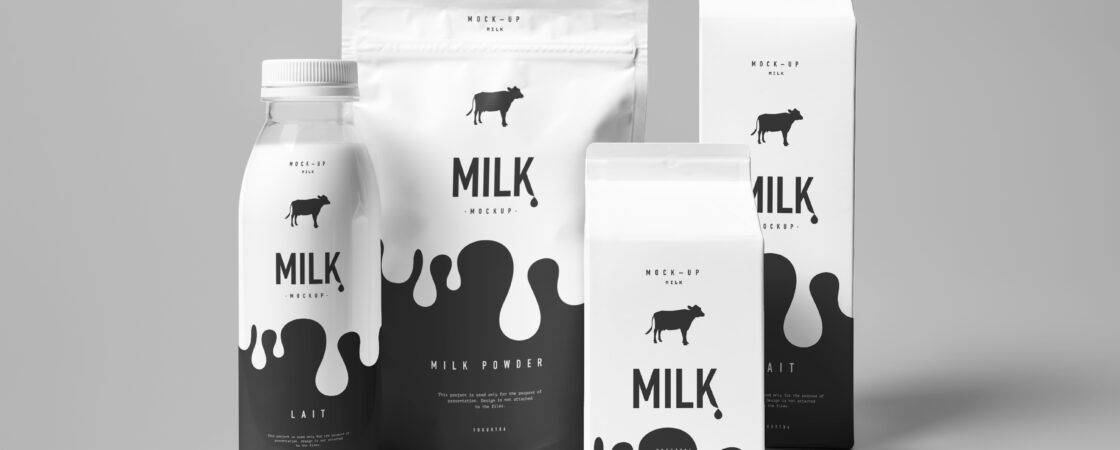The unassuming milk carton, with its familiar rectangular shape and colorful graphics, sits unpretentiously on our refrigerator shelves. Yet, within this everyday container lies a story far richer than its simple appearance suggests. From its revolutionary design to its environmental impact, and even its artistic potential, the milk carton is a surprisingly multifaceted item worthy of deeper exploration
A History of Innovation:
The journey of the milk cartons began in the 19th century with the rise of pasteurized milk. Glass bottles, the norm at the time, were expensive and inconvenient. Enter John Tetra Pak, a visionary who, in 1933, patented the tetrahedral-shaped paper carton we recognize today. This lightweight, stackable, and readily available innovation revolutionized milk distribution, making it affordable and accessible to the masses.
Over the years, the milk cartons evolved. The iconic gable-top design emerged in the 1950s, offering easier pouring and storage. Plastic linings replaced wax coatings, improving shelf life and safety. Today, cartons boast eco-friendly options like recycled paperboard and plant-based materials. This constant adaptability highlights the ongoing innovation that keeps the milk carton relevant in a changing world.
Beyond Milk: A Packaging Powerhouse:
While synonymous with milk, the carton’s versatility extends far beyond its dairy origins. It houses a diverse range of beverages, from juices and broths to plant-based alternatives and even wine. Additionally, it finds application in non-food sectors, packaging everything from motor oil to cleaning products. This adaptability stems from the inherent advantages of the carton format: lightweight, affordable, and offering excellent product protection.
Environmental Considerations:
Sustainability is an ever-growing concern, and milk cartons face scrutiny for their environmental impact. Paper production and plastic linings raise questions about resource consumption and waste generation. However, the industry is actively tackling these challenges. Recycling initiatives are on the rise, with many cartons boasting impressive recycled content. Additionally, biodegradable linings and plant-based materials offer promising alternatives. The quest for sustainable solutions underlines the industry’s commitment to minimizing its environmental footprint.
Art in Unexpected Places:
The seemingly mundane milk cartons have surprisingly inspired artistic expression. Its simple form and readily available materials make it a versatile canvas for creative minds. From intricate collages and playful sculptures to whimsical dioramas, artists transform used cartons into captivating works of art. These creations breathe new life into discarded packaging, raising awareness about environmental issues and showcasing the power of human ingenuity.
If you want to know more information about cbd boxes visit TopUSAPackaging
Looking Ahead:
The future of the milk cartons is brimming with possibilities. Continued innovation promises further improvements in sustainability, functionality, and even aesthetics. With advancements in bioplastics and recycling technologies, the carton could become even more environmentally friendly. Smart cartons with integrated sensors could track freshness and provide consumers with valuable information. The potential for integration with digital platforms, offering targeted marketing or recipe suggestions, opens up exciting avenues for exploration.
Building upon the foundation laid in the previous article, let’s delve deeper into specific aspects of the milk carton, exploring its evolving relationship with sustainability, the science behind its design, and its unexpected role in artistic expression.
Sustainability: Beyond Recycling Boxes
While recycling programs aim to divert used cartons from landfills, true sustainability involves minimizing environmental impact throughout the supply chain. Here are some key areas of innovation:
Forestry Practices:
Sourcing paperboard from sustainably managed forests ensures responsible wood harvesting and minimizes deforestation. Look for certifications like FSC (Forest Stewardship Council) on cartons.
Renewable Materials:
Replacing traditional plastic linings with bio-based alternatives derived from sugarcane or plant starches offers a more sustainable option. Brands like Elopak and Blue Bottle Coffee are already exploring these solutions.
Carbon Footprint Reduction:
Optimizing transportation logistics and energy-efficient manufacturing processes can significantly reduce greenhouse gas emissions associated with the carton’s lifecycle.
Science & Design: A Recipe for Functionality
The unassuming milk carton is a marvel of scientific and engineering expertise. Here are some key features that ensure its functionality:
Material Layering:
Each layer within the carton plays a crucial role. Paperboard provides structural integrity, while the plastic lining acts as a barrier to prevent leaks and maintain freshness. Additionally, metallic layers in aseptic cartons (shelf-stable milk) offer further protection against light and oxygen.
Sterilization Processes:
Depending on the product, different sterilization methods are employed. Pasteurization heats milk at moderate temperatures for a longer duration, while UHT (Ultra-High Temperature) treatment uses a shorter burst of extreme heat for shelf-stable milk.
Gable-Top Design:
This iconic design facilitates pouring and storage. The gable shape increases volume without compromising stability, while the spout ensures controlled pouring and minimizes spillage.
Artful Transformation: From Trash to Treasure
Used milk cartons hold unexpected artistic potential. Here are some creative ways they’re being repurposed:
Upcycled Crafts:
From whimsical animal figures to intricate jewelry, artists breathe new life into cartons through origami, decoupage, and other techniques. Sites like Pinterest and Etsy offer a plethora of inspirational ideas.
Community Art Projects:
Collaborations like the “Carton Cities” initiative engage communities in creating large-scale sculptures and installations using recycled cartons, raising awareness about sustainability and fostering creative expression.
Educational Tools:
Schools and educators use cartons for various creative projects, encouraging students to explore sustainability, recycling, and the potential of everyday objects.
Moving Forward: Innovation & Collaboration
The future of the milk carton depends on continuous innovation and collaboration across various sectors:
Partnerships between packaging companies, farmers, and recycling facilities can optimize the supply chain for a more sustainable approach.
Investments in research and development can lead to improved biomaterials, more efficient manufacturing processes, and intelligent features like freshness sensors.
Consumer education and awareness campaigns can encourage responsible recycling and support brands committed to sustainable practices.
The humble milk carton, far from being just a container, serves as a microcosm of innovation, environmental considerations, and creative expression. By understanding its story and future potential, we can appreciate its significance and contribute to a more sustainable and responsible future for this everyday item.
Conclusion:
The milk cartons, often overlooked, are much more than just a packaging container. It embodies a story of innovation, adaptability, and a constant strive for improvement. From its humble beginnings to its artistic reinvention, the carton reveals a surprising depth and character. As we move forward, the challenges of sustainability and evolving consumer preferences will continue to shape the carton’s evolution. Yet, with its inherent versatility and ongoing innovation, the humble milk cartons seem well-positioned to remain a relevant and even surprising presence in our everyday lives.



